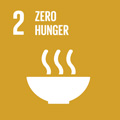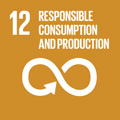- Docente: Alessandra De Cesare
- Credits: 2
- SSD: VET/04
- Language: Italian
- Moduli: Alessandra De Cesare (Modulo 1) Teresa Gazzotti (Modulo 2) Alessandro Seguino (Modulo 3)
- Teaching Mode: In-person learning (entirely or partially) (Modulo 1); In-person learning (entirely or partially) (Modulo 2); In-person learning (entirely or partially) (Modulo 3)
- Campus: Bologna
- Corso: Single cycle degree programme (LMCU) in Veterinary Medicine (cod. 8617)
Learning outcomes
The student (1) applies the standardized protocols for food inspection and the analytical methods followed by veterinary services in official controls in slaughterhouses and food transformation plants; (2) acquires clinical, pathological anatomy, food hygiene and inspection competencies to provide an assessment of food compliance for human consumption; (3) learns how to communicate with operators in the slaughterhouse to manage animal welfare and avoid animal pain during slaughtering; (4) learns official control methods to guarantee food safety to be applied during primary production, transformation and commercialization of foods, including import and export practices; (5) knows how to perform and assess an audit to evaluate the hygienic procedures and hazard mitigation strategies to put in place by food business operator according to national and international regulations concerning sanitary measures in animal productions; (6) knows how to organize a sampling plan for official inspections by veterinary services and how to interpret the analytical results to verify compliance or not compliance of food lots to official regulations.
Course contents
Module 1
The student learns the different components of quantitative microbiological risk assessment analyzing scientific opinions published by the European Food safety Authority (EFSA).
Module 2 divided into two activities:
- Analysis of health and hygiene problems and application of methods for their resolution.
- Execution of screening tests for the control of the presence of inhibiting substances in milk and interpretation of the results.
Module 3 divided into two activities:
- National and international regulations addressing hygiene and safety of milk and dairy products will be provided to the student. The student will then develop a HACCP plan for both an industrial and artisanal dairy production taking into account all issues concerning biological and chemical hazards as stated in official legislations.
- The student learns sampling and microbiological analyses of dairy products and how to write an analytical report. A judgment of compliance or not compliance with food safety and process hygiene criteria will be prepared by student based on the microbiological results.
Readings/Bibliography
National and international regulations on food hygiene and safety of foods of animal origin.
Scientific papers.
Scientific opinions EFSA.
Teaching methods
Practical activities.
Frontal lessons and activities in teams.
Assessment methods
The evaluation of the training execution will be done by:
- Evaluation of work trainers groups: several exercises and activities will be given to students under the guidance of the teacher in accordance with the principles of research based learning; these activities will be subject to an evaluation that will contribute to the score of the final examination of the Course of Inspection, Control and Certification of Food (Referee Prof. Trevsani).
- Frequency evaluation: the frequency to at least 70% of the lessons is required (7 out of 10)
-Level of engagement in the proposed activities.
Teaching tools
Materials needed for practical activities.
Videos and webinar available on line
Office hours
See the website of Alessandra De Cesare
See the website of Teresa Gazzotti
See the website of Alessandro Seguino
SDGs




This teaching activity contributes to the achievement of the Sustainable Development Goals of the UN 2030 Agenda.
